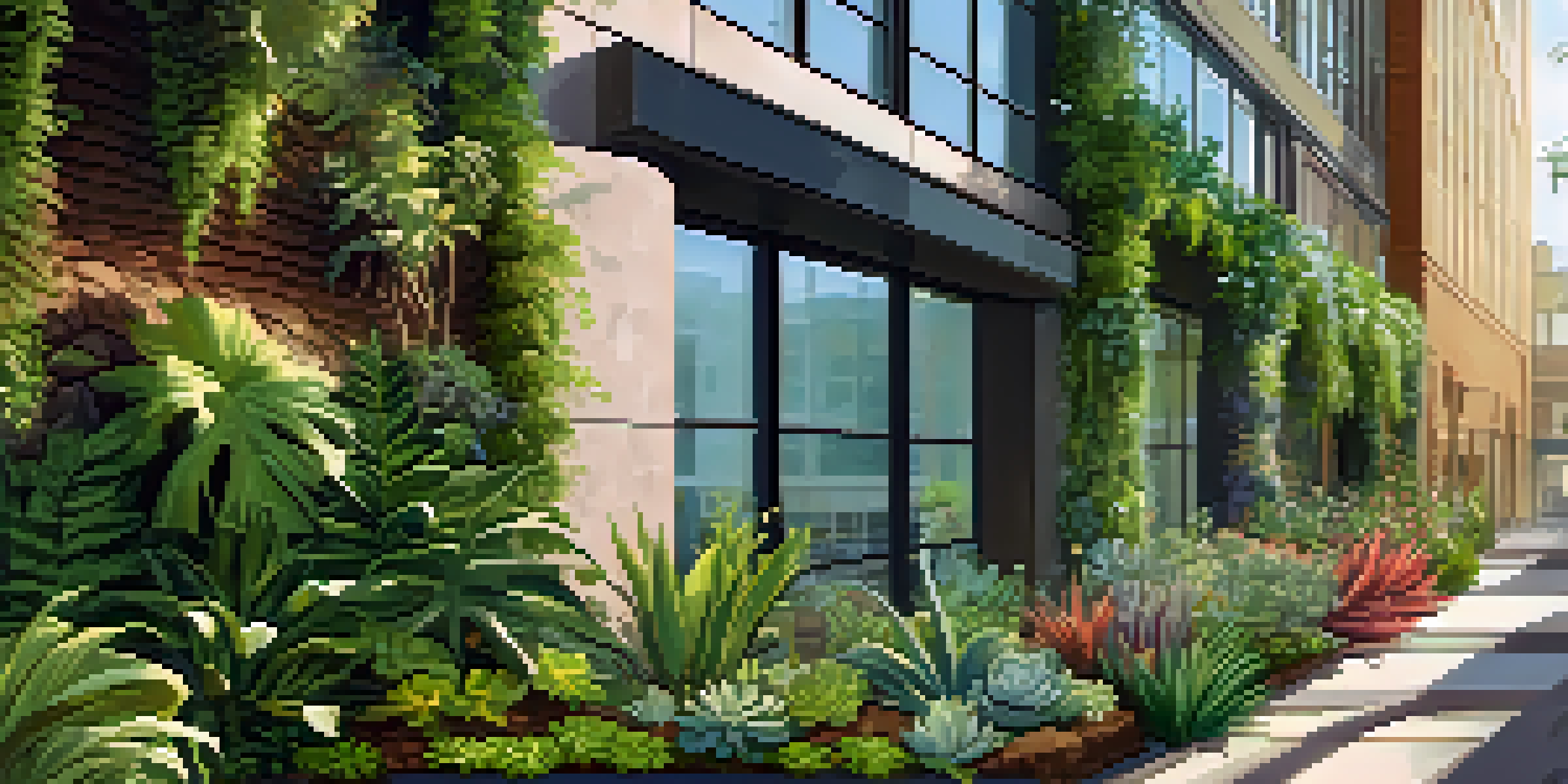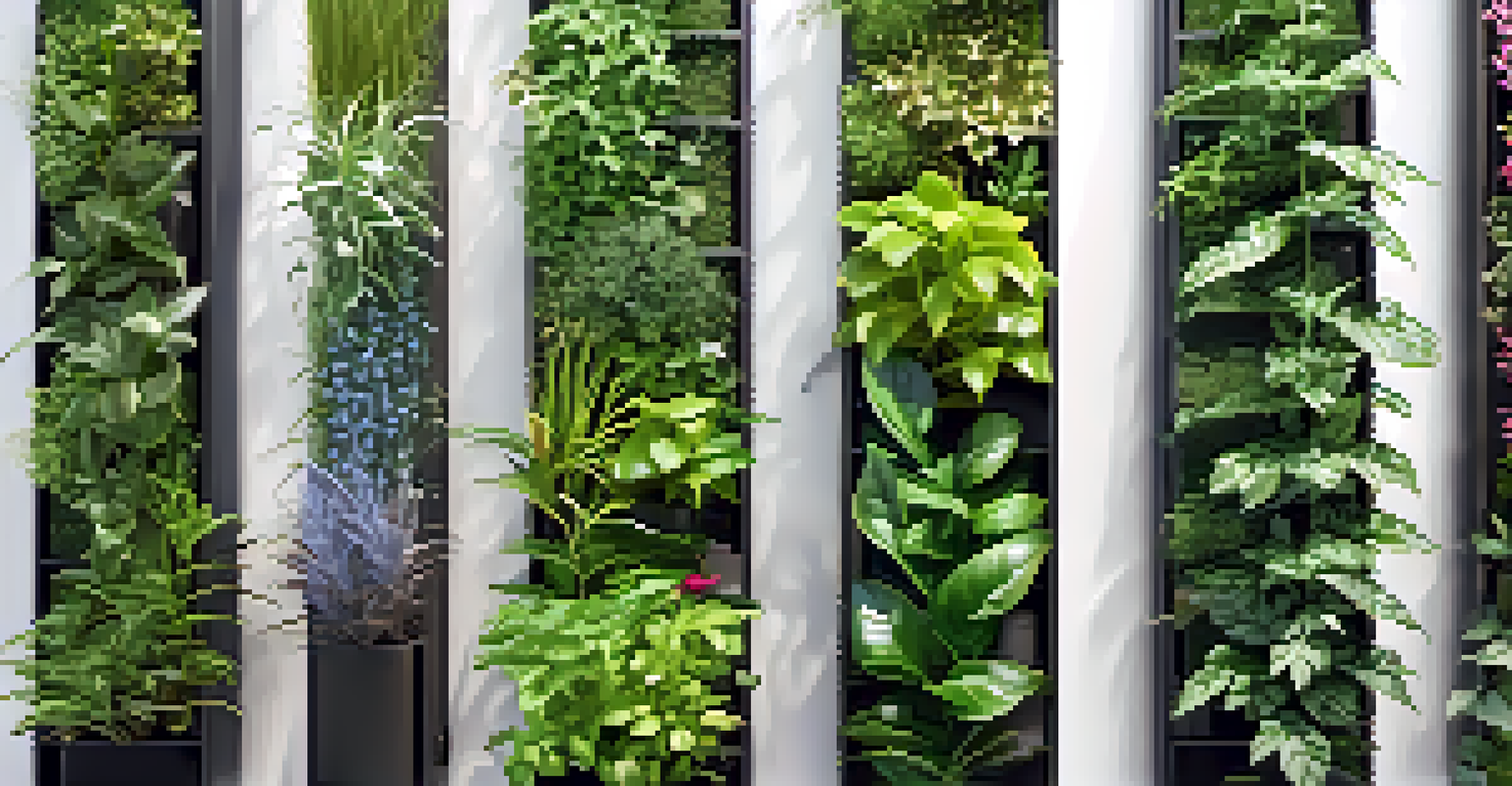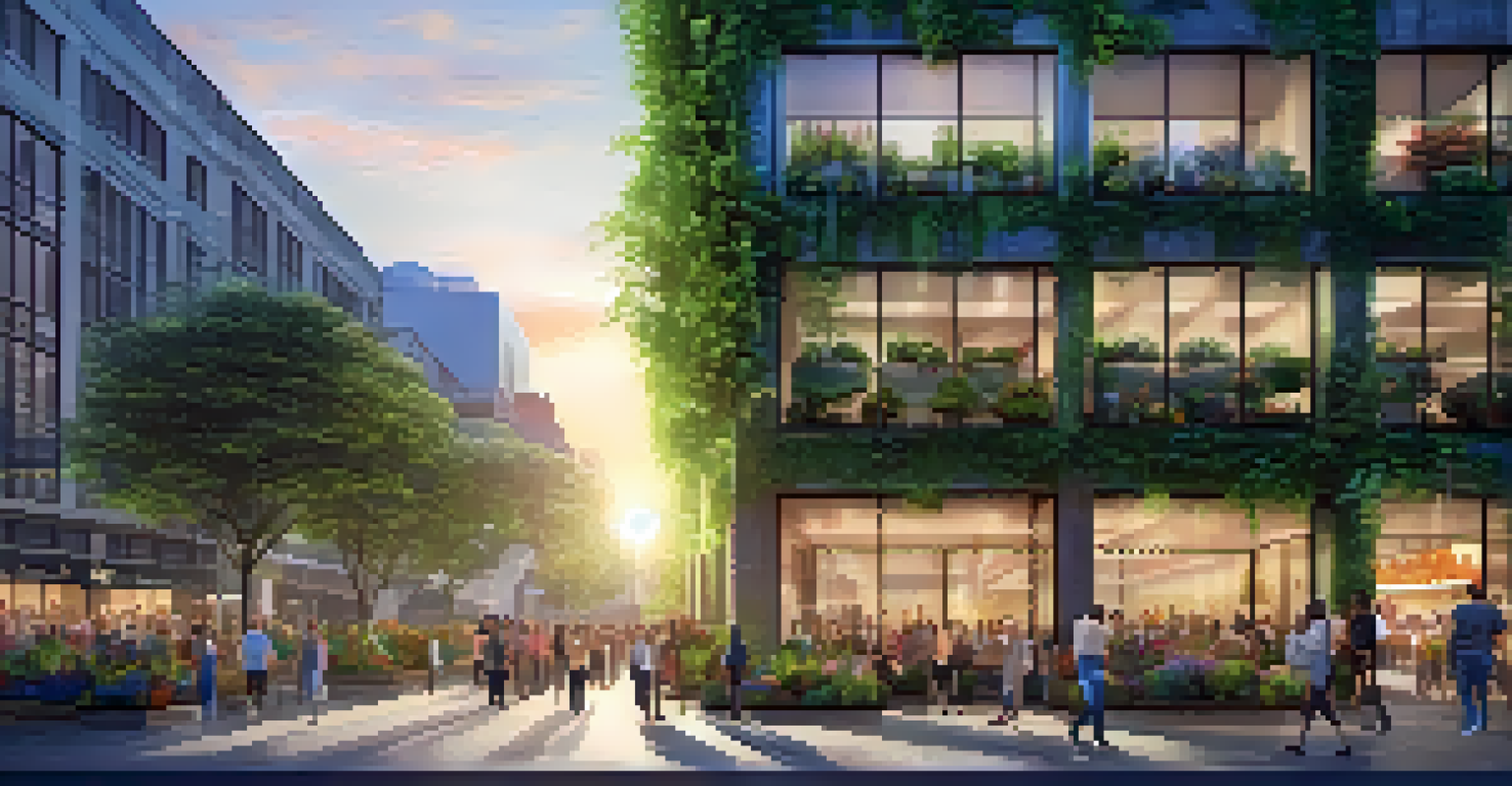Living Walls: Vertical Solutions for Urban Sustainability

What Are Living Walls and Their Benefits?
Living walls, also known as vertical gardens, are structures that support plant growth on vertical surfaces. They offer a range of benefits, from improving air quality to providing insulation for buildings. By incorporating greenery into urban landscapes, living walls help combat the heat island effect common in cities.
Nature does not hurry, yet everything is accomplished.
These vertical gardens not only beautify spaces but also enhance biodiversity by providing habitats for various species. Imagine transforming a dull concrete wall into a vibrant tapestry of colors and textures, all while supporting local wildlife. This integration of nature into urban environments is vital for creating sustainable cities.
Moreover, living walls can actively contribute to energy efficiency. They provide natural insulation, reducing the need for heating in winter and cooling in summer, which can lead to lower energy bills. As cities continue to grow, these green solutions can play a crucial role in achieving sustainability goals.
The Environmental Impact of Living Walls
Living walls are not just visually appealing; they also have a significant positive impact on the environment. By capturing carbon dioxide and releasing oxygen, plants contribute to cleaner air in densely populated areas. This natural process helps mitigate pollution and improve overall urban health.

Additionally, living walls can help manage stormwater runoff. By absorbing rainwater, they reduce the burden on drainage systems and minimize flooding risks. Picture a heavy rainstorm where the plants soak up excess water, preventing the streets from turning into rivers—a simple yet effective solution for urban flooding.
Living Walls Enhance Urban Spaces
Living walls, or vertical gardens, beautify cities while improving air quality and supporting local biodiversity.
Furthermore, they act as sound barriers, absorbing noise pollution in bustling urban settings. This creates a more serene environment for residents and enhances the quality of life. With increasing urbanization, the need for such solutions has never been more pressing.
Designing Efficient Living Walls
Creating a successful living wall requires careful planning and design to ensure the right plants thrive in vertical spaces. Factors such as sunlight, climate, and irrigation systems must be taken into account to create a lush, healthy wall. Designers often work with horticulturists to select plant species that complement each other and flourish in the specific environment.
The greatest threat to our planet is the belief that someone else will save it.
One common approach is to use modular systems or pre-planted panels that can be easily installed and maintained. These systems often include built-in irrigation to ensure the plants receive adequate water. Imagine having a garden that practically takes care of itself while providing a stunning visual impact—this is the beauty of modern living wall technology.
Additionally, integrating living walls into existing architecture can be a creative challenge. It requires collaboration between architects, city planners, and environmentalists to harmonize aesthetics with functionality. Each successful project serves as a testament to the potential of innovative urban design.
Challenges in Implementing Living Walls
Despite their numerous benefits, living walls come with certain challenges that must be addressed. One of the main issues is the initial cost of installation, which can deter potential adopters. However, considering the long-term savings from energy efficiency and maintenance, many see it as a worthwhile investment.
Another challenge lies in maintaining these green installations. Regular upkeep, including watering, pruning, and pest control, is essential for the health of the plants. For busy city dwellers, this can feel overwhelming, but many service providers offer maintenance packages to ease the burden.
Benefits of Green Infrastructure
These structures provide insulation, manage stormwater, and reduce noise pollution, contributing to a healthier urban environment.
Moreover, not all buildings are suitable for living walls due to structural limitations. Assessing the building's capacity to support the weight of soil and plants is crucial. However, with innovative designs and technology, even the most challenging spaces can be transformed into green havens.
Case Studies: Successful Living Wall Projects
Cities around the world have embraced living walls, showcasing their potential for urban sustainability. For example, the Bosco Verticale in Milan features two residential towers covered in over 9,000 trees, creating a micro-ecosystem in the heart of the city. This project not only improves air quality but also enhances the aesthetic appeal of urban living.
In Sydney, the One Central Park development boasts a stunning vertical garden designed by renowned architect Patrick Blanc. This green space has become a local landmark, attracting residents and visitors alike. It demonstrates how living walls can redefine urban landscapes and foster a sense of community.
These successful implementations serve as inspiration for cities looking to adopt similar initiatives. They highlight the transformative power of living walls and their potential to create healthier, more sustainable urban environments.
The Future of Living Walls in Urban Planning
As cities face pressing environmental challenges, the role of living walls is becoming increasingly important in urban planning. These vertical gardens can contribute to achieving sustainable development goals by integrating nature into city designs. Imagine walking through a city where every wall is alive with greenery, providing both aesthetic pleasure and ecological benefits.
Innovations in technology, such as smart irrigation systems and advanced plant selection, are making living walls more accessible and efficient. This means that even in urban areas with limited space, the potential for greenery is expanding. The future of living walls is bright, promising a greener, more harmonious coexistence between nature and urban life.
Future of Sustainable Urban Design
As awareness grows, living walls are becoming integral to urban planning, promoting a greener and more sustainable future.
Moreover, as public awareness of environmental issues grows, more communities are advocating for the inclusion of living walls in local policies. This grassroots movement can drive change and encourage city planners to prioritize green solutions. The future looks hopeful for urban sustainability, with living walls at the forefront of this revolution.
Getting Started with Living Walls
If you're inspired to bring a living wall into your life, there are several steps you can take to get started. First, assess your space—consider factors like sunlight, wall condition, and available water sources. Whether it's a small balcony or a larger wall, there's a living wall solution for every environment.
Next, research the types of plants that thrive in your area and can adapt to vertical growth. Local nurseries can provide valuable insights and recommendations tailored to your climate. Additionally, explore different installation methods, from DIY kits to professional services, depending on your budget and expertise.

Finally, engage with your community! Share your living wall journey and inspire others to consider similar projects. By fostering a culture of green living, we can collectively contribute to more sustainable urban environments, one wall at a time.